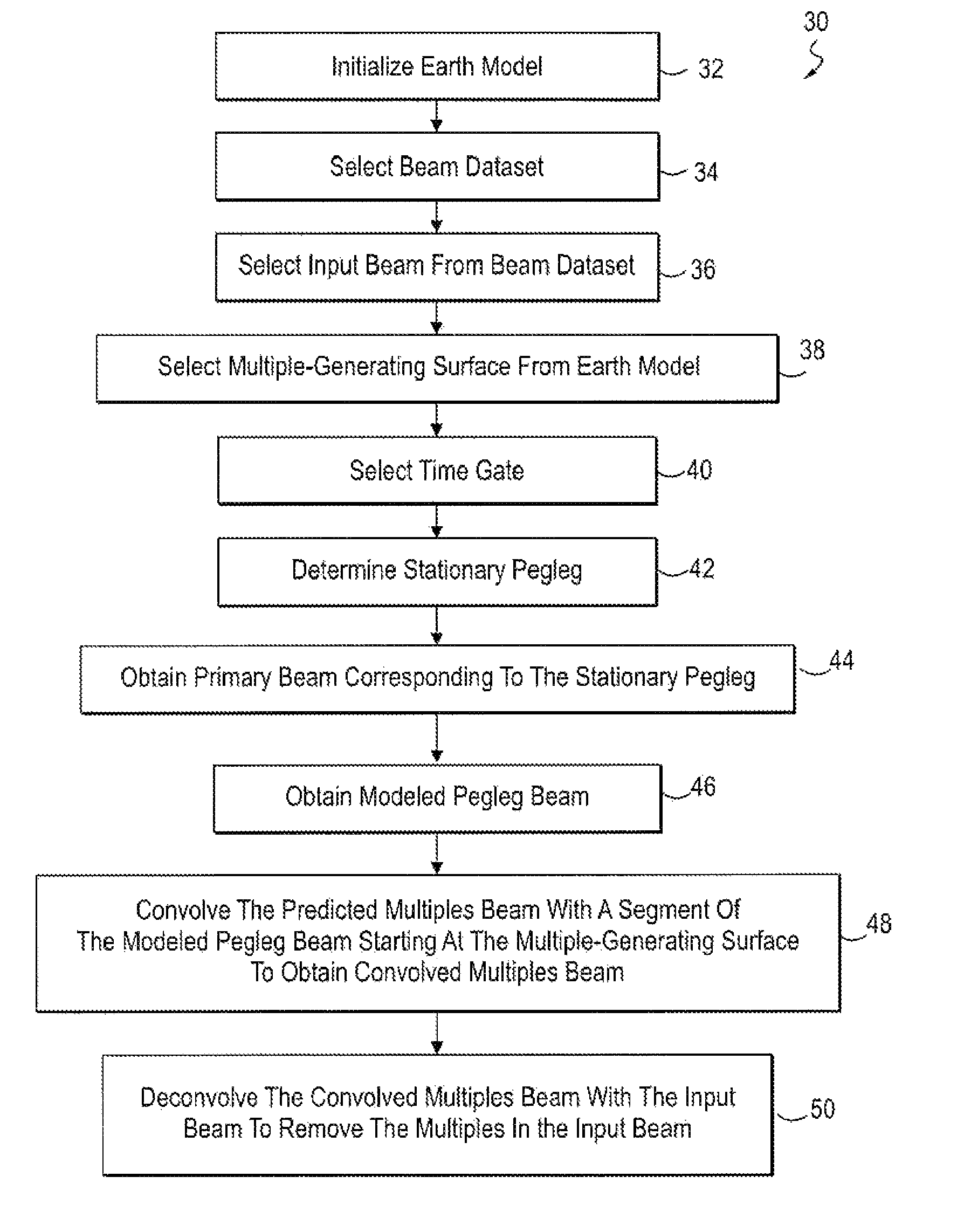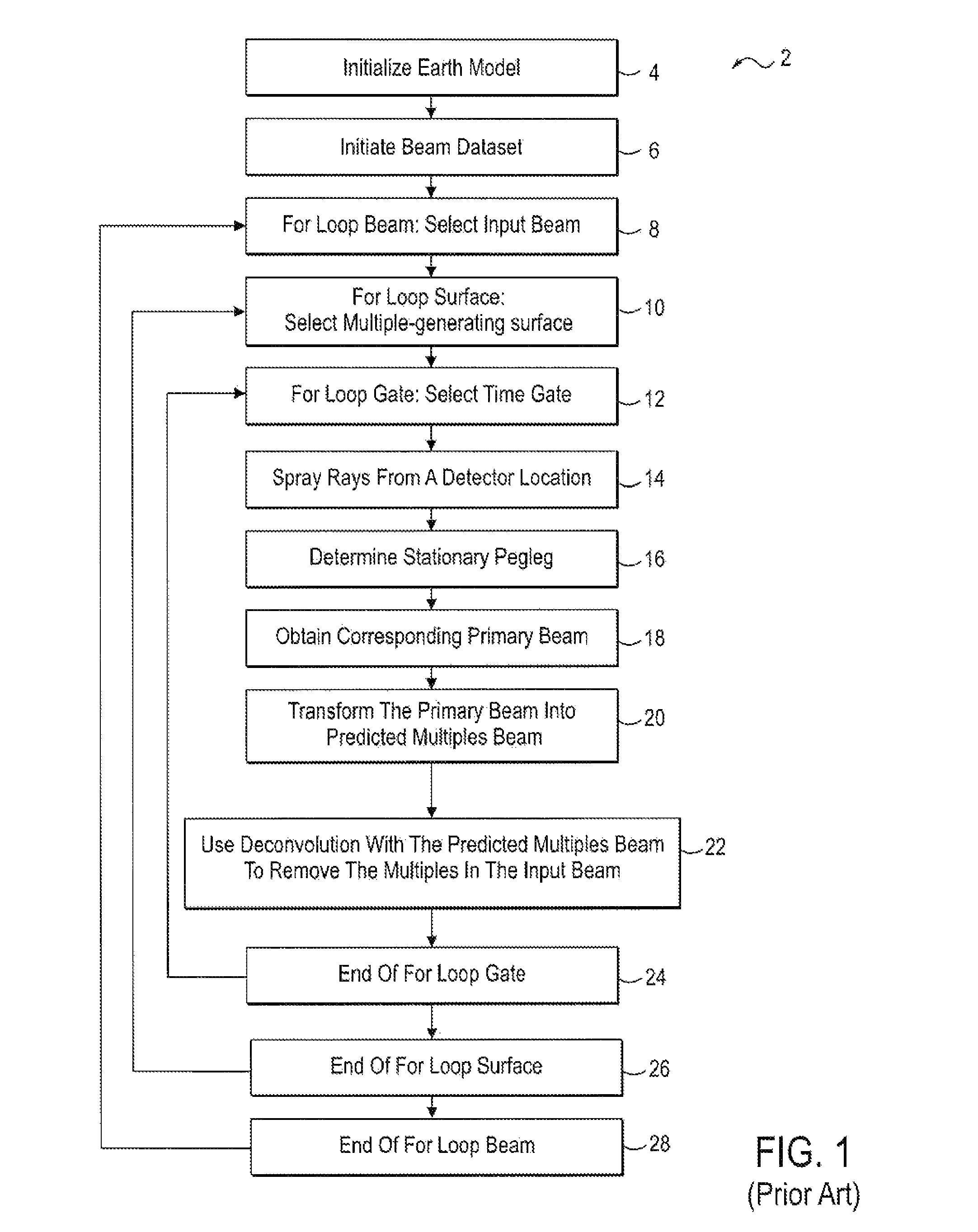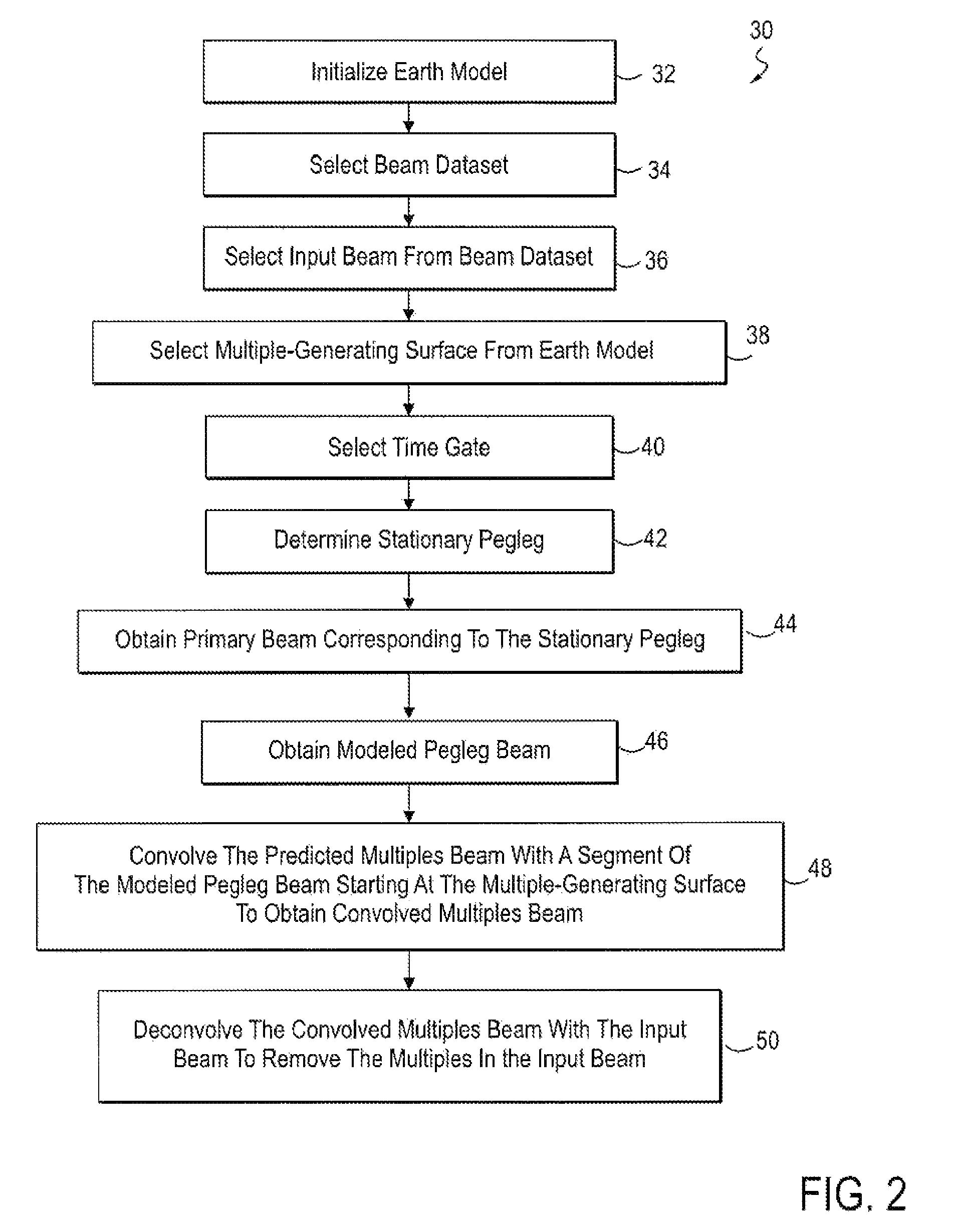Method for identifying and removing multiples for imaging with beams
a beam and multiple technology, applied in the field of seismic exploration and processing, can solve the problems of severe masking of primary reflection events for structural imaging, no useful information in multiples, and inability to accurately predict multiples
- Summary
- Abstract
- Description
- Claims
- Application Information
AI Technical Summary
Benefits of technology
Problems solved by technology
Method used
Image
Examples
Embodiment Construction
[0045]While this invention is susceptible to embodiments in many different forms, there are shown in the drawings, and will herein be described in detail, preferred embodiments of the invention with the understanding, that the present disclosure is to be considered as an exemplification of the principles of the invention and is not intended to limit the broad aspect of the invention to the embodiments illustrated.
[0046]One embodiment of the present invention 30 is illustrated in FIG. 2. The embodiment includes initializing an earth model that corresponds to a geological area of interest 32 and selecting a beam dataset derived from seismic data collected in the geological area of interest 34. An input beam from the beam dataset 36, a multiple-generating surface from the earth model 38, and a time gate 40 are selected. A stationary pegleg is determined utilizing the input beam, the multiple generating surface and the time gate 42. A primary beam corresponding to the stationary pegleg ...
PUM
 Login to View More
Login to View More Abstract
Description
Claims
Application Information
 Login to View More
Login to View More - R&D
- Intellectual Property
- Life Sciences
- Materials
- Tech Scout
- Unparalleled Data Quality
- Higher Quality Content
- 60% Fewer Hallucinations
Browse by: Latest US Patents, China's latest patents, Technical Efficacy Thesaurus, Application Domain, Technology Topic, Popular Technical Reports.
© 2025 PatSnap. All rights reserved.Legal|Privacy policy|Modern Slavery Act Transparency Statement|Sitemap|About US| Contact US: help@patsnap.com



